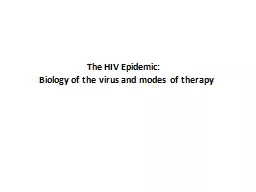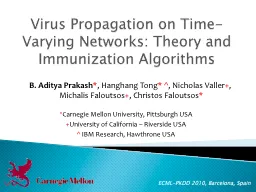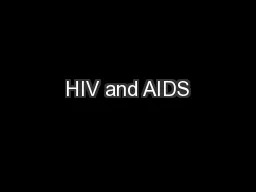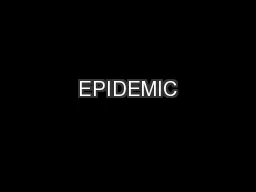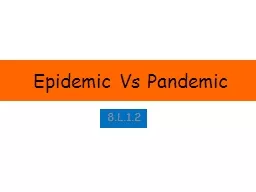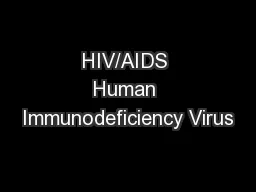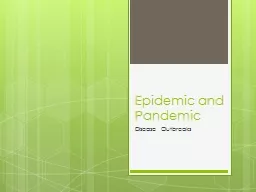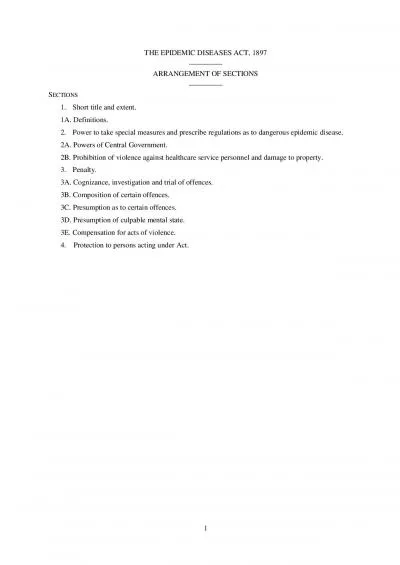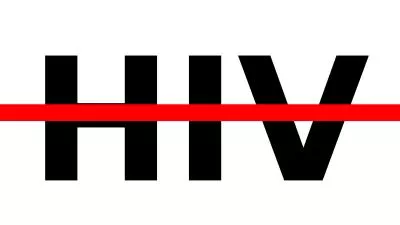PPT-The HIV Epidemic: Biology of the virus and modes of therapy
Author : min-jolicoeur | Published Date : 2020-04-03
OVERVIEW Key TakeHome Ideas History of the virus How was it discovered Where did it come from Clinical manifestation of HIVAIDS HIV classification Genome and morphology
Presentation Embed Code
Download Presentation
Download Presentation The PPT/PDF document " The HIV Epidemic: Biology of the virus..." is the property of its rightful owner. Permission is granted to download and print the materials on this website for personal, non-commercial use only, and to display it on your personal computer provided you do not modify the materials and that you retain all copyright notices contained in the materials. By downloading content from our website, you accept the terms of this agreement.
The HIV Epidemic: Biology of the virus and modes of therapy: Transcript
Download Rules Of Document
" The HIV Epidemic: Biology of the virus and modes of therapy"The content belongs to its owner. You may download and print it for personal use, without modification, and keep all copyright notices. By downloading, you agree to these terms.
Related Documents

